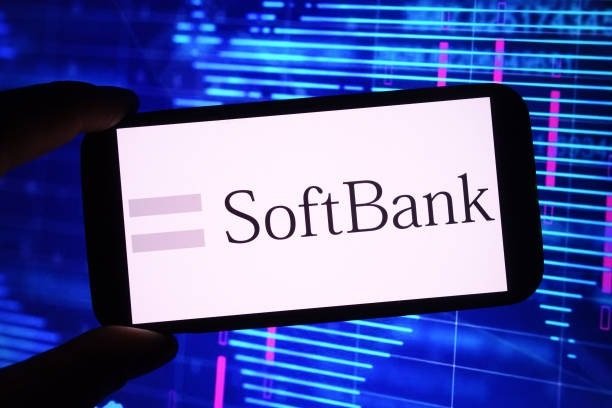The IT & Tech Budget 2025-26 has been unveiled. It positions Pakistan’s information technology and tech-enabled services (ITeS) sector as a core driver for economic growth and digital transformation. With increased allocations and targeted incentives, the government signals its intent to foster a vibrant tech ecosystem and boost exports. However, a deeper dive into the budget’s nuances and reactions from industry stakeholders reveals a complex picture. This includes significant opportunities alongside critical, lingering challenges. These issues could indeed hinder the sector’s long-term sustainability.
Boosting Innovation: Key Allocations in the IT & Tech Budget 2025-26
The government’s commitment to the IT sector is clear. This is shown through enhanced financial provisions and strategic policy shifts. The overall allocation for IT & Tech Development has seen a substantial increase to Rs. 25 billion. This marks a notable 66% jump from the previous fiscal year’s Rs. 15 billion. The surge reflects a strong focus on digital infrastructure and innovation within the IT & Tech Budget 2025-26.
Tax Relief & Incentives for Tech Growth
Key initiatives and financial incentives under the budget include:
- 5-Year Tax Holiday for Startups: IT startups registered with the Pakistan Software Export Board (PSEB) will benefit from an extended 5-year tax exemption. This provides crucial breathing room for nascent ventures to grow without immediate tax burdens.
- 0% Withholding Tax on Freelancers’ Earnings: In a significant move to empower Pakistan’s burgeoning gig economy, freelance earnings will now face zero withholding tax. This is a welcome relief from the previous 1-5% rates. It aims to directly boost individual incomes and formalize digital work.
- Duty-Free Imports: Registered tech firms are set to enjoy no customs duty on essential IT equipment. This includes laptops and servers. This reduction in operational costs should facilitate technological upgrades and expansion.
Funding Digital Infrastructure & Talent Development
The budget also dedicates substantial funds to foundational elements:
- 5G Infrastructure (Rs. 10 Billion): A substantial sum is allocated to accelerate 5G infrastructure development. Commercial trials are anticipated in early 2026. This foundational investment is vital for unlocking advanced digital services, fostering smart cities, and enabling new IoT applications.
- Freelancer Training Programs (Rs. 5 Billion): Recognizing Pakistan’s vast youth potential, Rs. 5 billion is dedicated to training 50,000 young individuals. Training will cover high-demand skills such as Artificial Intelligence (AI), blockchain, and cloud computing.
- Tech Parks (Rs. 3 Billion): New innovation hubs are slated for Karachi, Lahore, and Islamabad. These aim to provide state-of-the-art facilities and foster collaboration. PSDP allocations for ongoing IT Parks projects in Karachi and Islamabad alone amount to Rs. 4 billion and Rs. 4.9 billion respectively for FY2025-26.
Boosting IT Exports & Foreign Currency Inflow
To maximize the economic impact of the IT sector, the budget focuses on exports:
- 100% Foreign Currency Retention: A game-changing policy allows IT firms to retain 100% of their export earnings in foreign currency. This is a significant increase from the previous 35% cap. This policy enhances liquidity and encourages reinvestment. Furthermore, it aligns Pakistan with global best practices for tech exports.
- New “Tech Export Zones”: Special zones in Karachi and Lahore will offer 10-year tax-free operations. These are designed to attract global tech giants and bolster foreign direct investment (FDI). The recent Special Technology Zones Authority (Amendment) Bill 2025 further strengthens this framework.
Strategic Focus on AI & Emerging Technologies
The budget also highlights a forward-looking approach to innovation:
- National AI Fund (Rs. 2 Billion): This dedicated fund will provide grants for AI startups and research labs. This signals a strategic push towards advanced technologies. It also fosters a robust AI ecosystem.
- Blockchain & Cloud Adoption: Incentives are in place to encourage businesses to adopt blockchain-based solutions. This promotes secure and decentralized digital frameworks across various sectors.
How the IT & Tech Budget 2025-26 Compares to Previous Years
The current budget marks a significant shift in governmental emphasis on the IT sector. This is evident when compared to previous fiscal years:
| Initiative | 2024-25 Allocation | 2025-26 Allocation | Change | Notes |
|---|---|---|---|---|
| Overall IT Sector Dev. | Rs. 15 Billion | Rs. 25 Billion | ↑ 66% | Highest ever allocation for IT. |
| Freelancer Withholding Tax | 1-5% | 0% | 100% Relief | Major relief for the gig economy. |
| 5G Development | Rs. 2 Billion (Delayed) | Rs. 10 Billion | 5x Increase | Prioritized rollout with clear timeline. |
| Startup Tax Exemption | 3 years | 5 years | Extended | More runway for new ventures. |
These figures underscore a clear strategic shift. They indicate a move towards accelerating digital transformation. Also, they show leveraging the IT sector as a primary driver of economic growth within the IT & Tech Budget 2025-26 framework.
Is Pakistan’s Tech Sector Truly Booming? Growth & Lingering Concerns
While the budget initiatives offer a strong foundation, the current state of Pakistan’s tech sector presents a mixed picture. It shows robust export growth alongside significant hurdles.
Positive Developments in the Tech Sector
- IT Exports Soaring: Pakistan’s IT and IT-enabled services (ITeS) exports are on a strong upward trajectory. For the first ten months of FY25 (July-April), exports reached $3.1 billion. This marks a substantial 21% year-on-year increase. Projections indicate full FY25 exports could hit $3.5 billion to $3.7 billion. The government’s ambitious goal is to increase IT exports to $7.5 billion by 2026 and $10 billion by FY29.
- Global Recognition for Freelancing: Pakistan continues to rank 3rd globally in freelancing growth. This showcases its vast talent pool and significant potential in the global gig economy.
Critical Challenges and Risks Ahead
- Brain Drain: A critical issue remains the brain drain. An estimated 30% of IT graduates seek opportunities abroad. This is often due to better salaries and professional growth. This outflow of skilled talent undermines local industry development.
- Infrastructure Gaps: Frequent electricity outages and inconsistent internet connectivity continue to disrupt remote work. They also impact operational stability for IT firms. While the budget allocates funds for 5G, broader, reliable energy and internet infrastructure are still much needed. The 5G rollout itself faces legal battles over spectrum availability. This could delay comprehensive deployment.
- Startup Funding Dip: Despite the focus on startups, venture capital funding for Pakistani startups experienced a significant 70% plummet in 2024. It dropped to just $22.5 million from $75.8 million in 2023. While the average deal size increased, this indicates a challenging investment landscape. It also shows increased selectivity from investors.
- Regulatory Hurdles & Policy Inconsistency: Fintech and crypto startups often face slow approval processes. They also deal with bureaucratic hurdles. Furthermore, the Pakistan Software Houses Association (P@SHA) has voiced strong concerns about the budget. They call it a “disappointment” and even a “death knell” for the industry. They emphasize the urgent need for a stable, long-term (e.g., 10-year) tax policy framework for IT exporters. The existing 0.25% Final Tax Regime (FTR) is set to expire by June 30, 2026. This lack of predictability jeopardizes significant Digital Foreign Direct Investment (DFDI) commitments.
- Payment Gateway Issues: Despite ongoing discussions, the absence of major international payment platforms like PayPal and Stripe remains a significant barrier for freelancers and IT exporters. It complicates the repatriation of earnings. While the government is actively engaging with them, the ultimate decision rests with the platforms themselves. No immediate breakthrough has been announced.
Expert Opinions & The Road Ahead for Pakistan’s Tech Industry
Reactions from industry leaders and experts are a blend of optimism for the stated goals and strong caution regarding implementation and policy stability. Jazz CEO believes, “5G trials in 2026 will revolutionize Pakistan’s digital economy,” as reported by Dawn. Careem Pakistan also expressed optimism, stating, “Tax exemptions will attract more VC funding for startups,” according to ProPakistani.
However, a former IT Minister, quoted by The News, underscores a crucial point: “The budget is good, but without PayPal, freelancers still face payment hurdles.” More critically, P@SHA’s recent statements lambast the budget for not addressing the long-standing demand for a 10-year tax policy for IT exports. They also criticize the lack of an equitable tax framework for high-earning remote workers. They argue this omission “penalizes compliance; discourages investment and incentivizes informality.” It potentially jeopardizes hundreds of millions in committed FDI and causes further brain drain from the formal sector.
The IT & Tech Budget 2025-26 undeniably represents a significant stride in Pakistan’s journey towards a digital future. The ambitious allocations and incentives reflect a strategic vision. However, the true impact will depend on the government’s ability to swiftly address the persistent challenges. These include talent retention, infrastructure stability, bureaucratic efficiency, and, crucially, the establishment of long-term, consistent policies. Effective implementation, coupled with ongoing, constructive dialogue between the government and the IT industry, will be paramount. Only then will this budget truly ignite a sustained digital revolution or merely lay the groundwork for future unfulfilled potential.
For more news and updates, please visit PFM Today.













